The Lewis Chessmen, among the most important game pieces ever carved, is a valued collection held in the British Museum. The pieces are called Uig because of where they were found: buried under 15 feet of sand at the head of Uig Bay on the Isle of Lewis in Scotland. Discovered in 1831, the hoard contains 93 pieces. Among the 78 chess objects, there were also 14 table men and one belt buckle.
The chess set is believed to date to 12th century Norway, more specifically Trondheim. At this time, some of the Scottish islands were under Norwegian control. The objects were carved from walrus tusk and whale tooth and include the shapes of kings, queens, rooks, knights, bishops, and pawns, all made in typical Norse style.
Their faces are fascinating because some of their expressions seem fearful, while others look anxious. Some are battle ready, with pieces biting their shields and holding their swords. The kings and queens sit on their high chairs, and the bishops clutch manuscripts close to their chests.
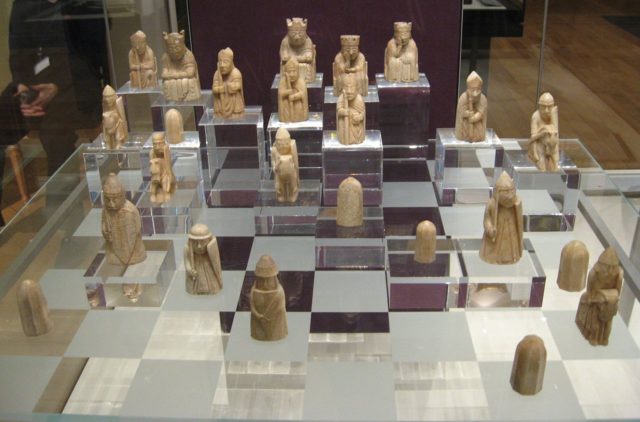
The predominant theory is that they belonged to a merchant who traveled from Norway to Ireland and buried the objects to keep them safe. Today’s Isle of Lewis was a significant trading center, and some records suggest that the objects were carved by Margaret the Adroit, the wife of a noble priest. Some sources say that Margaret was Icelandic. She appears in a single textual source, the Icelandic saga, Pals saga biskups, which, translated, means the Saga of Bishop Paul.
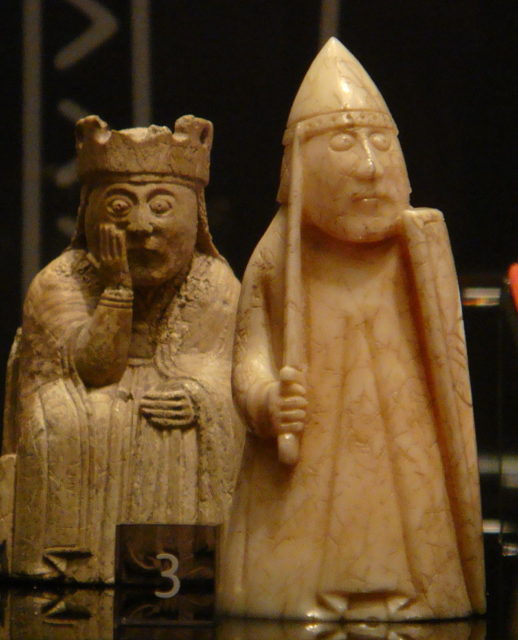
In the Saga of Bishop Pall, the bishop often required Margaret’s crafting skills and ordered pieces from her made of walrus ivory. Margaret is discussed in the book written by Nancy Marie Brown titled Ivory Vikings, the Mystery of the Most Famous Chessmen in the World and the Woman Who Made Them. However, other artifact specialists claim that more than one carver created the chess objects. Because of the number of discovered pieces, it is believed that they are part of at least five sets.
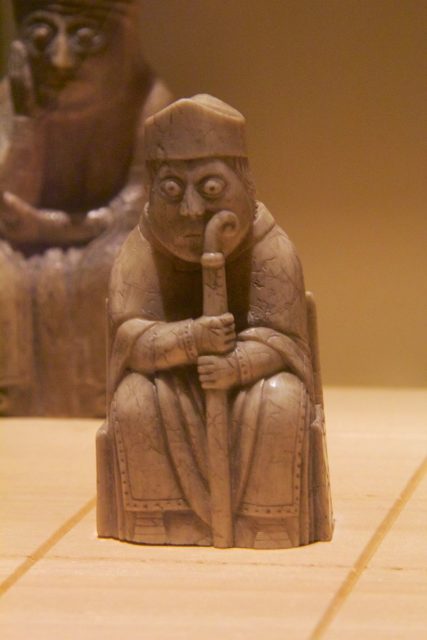
Besides the human forms, there are also geometric shapes, most of which represent the pawns. Some scholars detect comedy in the carvings. There is the piece that bites his shield (which is a berserker) and the anxious and worried-looking ones with their simple shapes and round eyes.
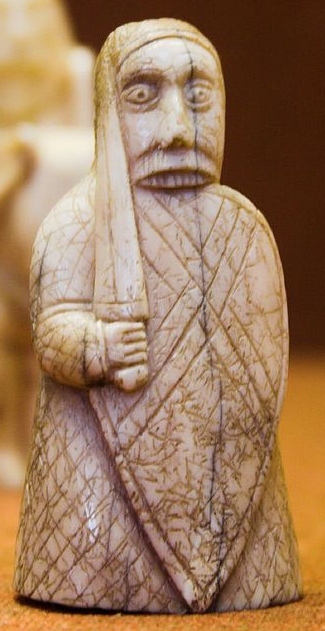
Historians believe that the intent was not to carve either sad or comical expressions, but it is modern observers who perceive such emotions. The first exhibition after the discovery was on April 11, 1831, in the Society of Antiquaries of Scotland. A meeting was held about the hoard and soon after the pieces were split and held in different locations.
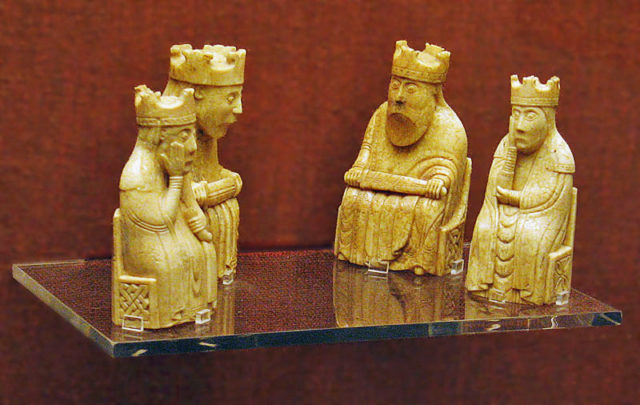
The British Museum bought 81 pieces, and Charles Kirkpatrick Sharpe purchased the other 10. Later, he sold the items to Lord Londesborough. At that time there were 11 items, after Sharpe found another bishop and added him to the collection. Today, they are on display in the National Museum of Scotland.
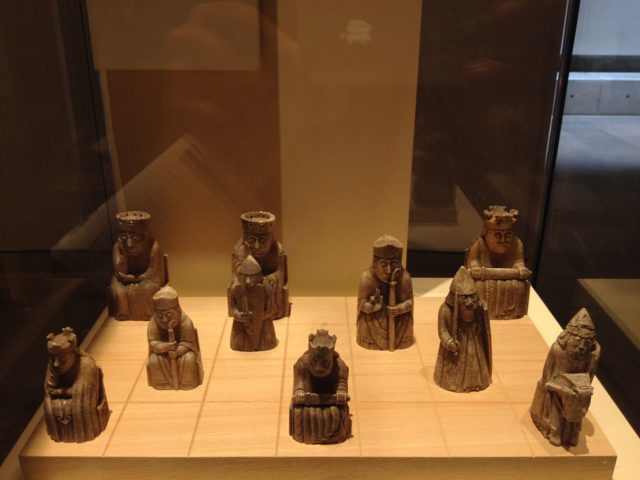
The chessmen, including those in the British Museum, have traveled the world several times for exhibitions. Wooden replicas were made and sold as souvenirs in museums.
Like many other medieval artifacts, the Lewis Chessmen remain an enigma, and that may be one of the reasons why people are so drawn to them and wonder where they came from and who is the carver.
